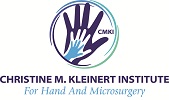Published in The Courier-Journal from Jan. 8 to Jan. 10, 2016
Robert D. Acland
It is with profound sadness that the family of Robert D. Acland, MBBS, FRCS announces his death on Wednesday, January 6, 2016. Robert was born on June 20, 1941 to Sir Robert Thomas Dyke Acland and Anne Stella Alford in Exeter, England, who predeceased him, as did his older brother Sir John Dyke Acland.
A renaissance man, Robert was brilliant, creative, and inspirational. He was a loving and generous teacher, husband, and parent. He is survived by his wife of 24 years, Bette Levy, with whom he shared a love of the absurd and the creative, the refuge of the outdoors, and a contented life, and his four children, whom he cherished: Beatrice Maud Acland; Daniel James Acland (Nicki Dub); Benjamin Thomas Acland (Jocelyn Matsuo-Acland); and Emily Grace Acland Michael (Jeffrey Michael), as well as his younger brother, Henry Dyke Acland (Di Steeds). He is also survived by many cousins, nieces, nephews, and other relatives, as well as Sarah Acland, and Susan Bishop, all of whom mourn his passing. He will be greatly missed by the thousands of medical students and practitioners who were taught by him personally, learned from his texts and videos, or used his microsurgical innovations. The many patients who benefited from their doctors’ expertise enabled by Robert, will also suffer his loss. He was an extraordinary man with a broad reach, and he enriched the lives of all whom he touched. Many hearts are broken.
Robert graduated from London Hospital Medical College in 1964 with a Bachelor in Medicine (MB). He received his MBBS from London University in 1969, completed internships in the UK and Tanzania, and residencies in plastic surgery in Glasgow (FRCS in 1969) and London (FRCS in 1970). In 1967, he became acquainted with Harry Buncke who had written about the possibilities of microsurgery in immediate distant skin transfer. Following a visit with him in San Francisco, Robert decided to devote his career to microsurgery and he is credited with being one of the pioneers in plastic and reconstructive microsurgery.
In 1976, Robert received an invitation from Dr. Joseph Kutz of Kleinert and Kutz Hand Care Center to run their microsurgery lab, the second of its kind in the US. In conjunction with this, he also received a teaching appointment to the University of Louisville School of Medicine. At this time, with help from a German manufacturer, he developed one of the first microsurgical instruments, the Acland micro-vessel clamp, an instrument that allows surgeons to create a hole in a vessel for end-to-end anastomosis, as well as the 10-0 nylon sutures and needles that are still used today.
In his career at U of L as Director of the Microsurgery Teaching Laboratory, he taught microsurgical skills to students and doctors alike, and continued to hold that position until 1998. During this tenure, Robert published the first edition of Acland’s Practice Manual for Micro-vascular Surgery, also known as the “Red Book”, a manual on microsurgical techniques (1997). The current edition was revised in 2008 in a joint effort between the original author and Dr. Raja Sabapathy (Ganga Hospital) and is essential for any trainee in microsurgical techniques and fundamentals of surgical microscopes and their use.
While at U of L, he ascended through the professional ranks in Plastic and Reconstructive Surgery, becoming full Professor in 1986. He also held Associate appointments in the Departments of Physiology and Biophysics, and of Anatomical Sciences and Neurobiology. With his retirement, he served as professor emeritus in the Department of Anatomical Sciences at the University of Louisville School of Medicine.
Not content with one successful career as a reconstructive microsurgeon and director of the teaching lab, he forged a second career as a clinical anatomist and became a pioneer in the field of fresh tissue dissection. From 1981 to 2011, he established and ran the Fresh Tissue Anatomy Dissection Laboratory for surgeons and students at the University of Louisville, which was the first of its kind in the United States, and is considered one of the best and most respected facilities in the world. He was generous in sharing his expertise, and his technique of `light embalming’ at the U of L facility has been emulated at many other medical centers. In 2014, the lab was renamed in his honor.
His “Sistine Chapel” is the comprehensive Video Atlas of Human Anatomy into which he put his heart and soul. Beginning in 1993 and taking nine years to create, the atlas depicts moving structures—muscles, tendons, and joints—making the same movements that they make in life. The videos show complex structures, from bone to surface anatomy, to provide a foundation for understanding anatomical structure and function.
He was a pioneer in developing new and highly effective techniques of anatomical videography that give the viewer a clear three-dimensional understanding of spatial relationships. He had gained expertise in instructional video during his first career as a teacher of microsurgical techniques. He achieved a unique 3-D perspective using innovative camera rotation techniques that he pioneered with his colleagues at the University of Louisville School of Medicine. He also invented the many armatures and devices to enable the specimen to rotate along multiple axes.
Robert D Acland
Obituary
http://www.legacy.com/obituaries/louisville/obituary.aspx?n=robert-d-acland&pid=177196618&fhid=7131



